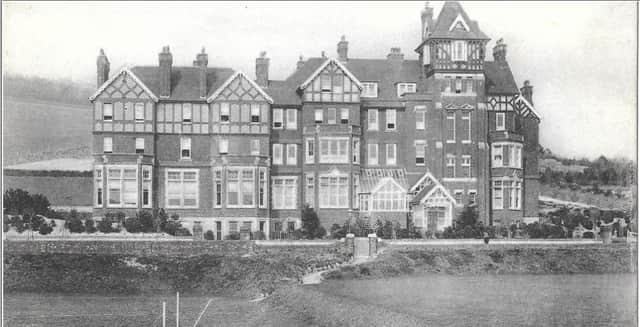NOSTALGIA: Eastbourne educational establishment nearly two centuries old


Founded in Chiswick in 1827, it was the inspiration for Miss Pinkerton’s Academy in Thackeray’s Vanity Fair.
The school moved to Eastbourne in the late 19th century, first to Carlisle Road (now Gonville House of Eastbourne College) but within a few years transferred to the building that still carries its name in Upper Carlisle Road.
Advertisement
Hide AdAdvertisement
Hide AdBy the time of the 1901 census, the girls were in their new, purpose-built school with its 14 bathrooms, a spacious gymnasium and ten music rooms. It had its own kitchen garden, playing fields and six tennis courts.
School fees were 41 guineas per term with supplements for music and riding.
The principal, Miss Wilson, presided over six governesses, six housemaids, a cook, a parlour maid, a kitchen maid, a scullery maid, a linen maid and a houseboy.
Ten years later another census reveals Jean Orr-Ewing, later the distinguished scientist involved in the discovery of penicillin.
Advertisement
Hide AdAdvertisement
Hide AdThe school thrived during the 1920s and 1930s but war would change everything.
In the Easter magazine of 1940, the headmistress, Miss Oliver, writes of the death of two former pupils and their mother, “The grim reality when we heard that Doreen and Betty Wade had been lost with their mother aboard SS Yorkshire”.
The magazine describes air raid precautions, “The gym is dismantled and gas-proofed while blue blinds and dark curtains are a reminder of the black-out. Staff and girls have filled and laid 2,000 sandbags”.
There are contributions from pupils, “When war broke out, some of us returned, as Eastbourne is one of the safest places in England. How funny to be back in the holidays! No voices in the empty rooms, only the clatter of feet on the stairs, but how busy everyone was. The most difficult part was blocking the gym windows with sandbags”.
Advertisement
Hide AdAdvertisement
Hide AdOne girl, a Jewish refugee, writes of Germany and how people fear the shadow that never vanishes – the Gestapo.
Cheerful news of old girls reveals many helping the war effort, “Diana Butland is a corporal in the WAAF and stationed at Byfleet. Mrs D Campbell (née D Savill) was presented at Court last year.
“Mrs Dawes (née M England) is a secretary for the Red Cross, equipping hospital trains. Peggy Fairweather is in charge of a kitchen and a hundred WAAFs. Jill Greenwood has joined the Land Army.
“Maisie Marks is an ambulance driver in London. Barbara Poland was at the British Consulate in Gothenburg but her father (later Rear-Admiral Nicholas Poland) was recalled and Barbara is now being all hush hush up north.”
Advertisement
Hide AdAdvertisement
Hide AdMiss Oliver had been lulled into a false sense of security during the Phoney War but in June 1940 Eastbourne became an invasion zone and the school had to be evacuated with all possible speed.
Alternative premises were found – Dean Hall at Littledean, near Cinderford in Gloucestershire.
Parents were advised and notices appeared in the Eastbourne Gazette.
In 1942 the building was requisitioned by the War Department and around 1950 it became accommodation for Eastbourne Teacher Training College. However, Boston House School never returned and its fate remains unknown. Did it merge with another school or did this once prestigious school simply fold?
Advertisement
Hide AdAdvertisement
Hide AdEastbourne Local History Society would welcome any information.
The above was submitted by Michael Ockenden of Eastbourne Local History Society from an article in the Summer 2017 issue of the Eastbourne Local Historian. For details of ELHS contact Diana Guthrie ([email protected]) on Eastbourne 419181.